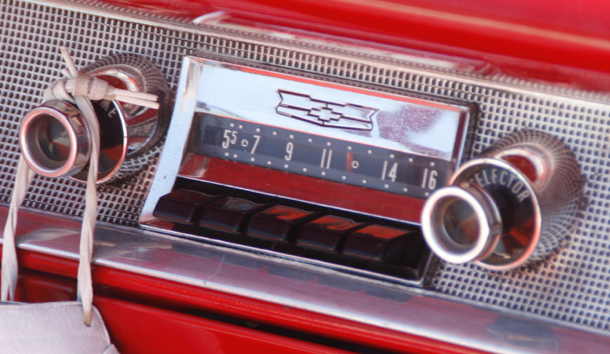 The BMW i3 may be the first new car to come without AM radio since cars starting coming with radios, way back in the 1930s. Meanwhile, Disney is unloading a big pile of AM stations carrying Radio Disney, a program service for kids focused mostly on “teen idols.”
The BMW i3 may be the first new car to come without AM radio since cars starting coming with radios, way back in the 1930s. Meanwhile, Disney is unloading a big pile of AM stations carrying Radio Disney, a program service for kids focused mostly on “teen idols.”
In Disney’s Devastating Signal About Radio, Eric Rhoads of Radio Ink spoke Big Truth about the heft of the harbinger Disney’s move delivers to the media marketplace. In a follow-up post he defended his case, adding (as he did in the first post) that “radio is not dead.”
In Redefining “Radio” for the Digital Age,” Deborah Newman‘s proposed panel for the next SXSW, she begins with this question: Is radio a technology or a marketing term? Good one. I think “marketing term” is the answer — because the original technology, AM radio itself, is dead tech walking.
Here in the UK, for example, I am listening right now to Radio 4 on 198KHz, in the longwave (LW) band — one still used in Europe, because waves on frequencies down that low (below the AM band, called MW for Medium Wave) travel great distances across the land. I can also get LW stations from Germany (on 153) and France (on 162). All are doomed, because the required tubes (called valves here) are no longer made. When the last ones fail, Radio 4 is going off the air on LW. Most AM stations, which operate at lower powers (50,000 watts vs. 500,000 watts for Radio 4 LW), are solid state and don’t use tubes, so they lack the same risk of obsolescence on the transmitting side. But AM receivers tend to suck these days (manufacturers cheap out in the extreme), and transmitting towers tend to be sited on land that is worth more as real estate than the stations themselves. Environmentalists would also like to see towers sited in swamps and tidelands revert to nature. (The best sites for AM towers are on salt water or tideland, because the ground conductivity is highest there. This is why the Meadowlands of New Jersey are home to most of New York’s AM stations.)
The bottom line, as it always has been (at least for commercial radio) is ratings. Here are the latest from Radio-Info (sourcing Nielsen). In some markets, some AM stations do well. You’ll find an AM news, talk or sports station or two near the top of the list for Chicago, San Francisco, Baltimore, Cincinatti, St. Louis, Sacramento, Milwaukee, Salt Lake City, Memphis and Hartford. Elsewhere AM stations are way down the list. Most don’t make the listings at all. In Orlando, the bottom six are three AM stations and three “HD” stations (secondary streams carried by radio stations and audible only on radios that can decode them). Of the 29 listed stations for Washington, DC, only 3 AM stations make the cut. The top one of those, WTEM/980, is a sports station with a 1.5 rating. The next two are WSPZ/570 with an 0.4 and WFED with an 0.1.
History… WTEM was once WRC, NBC’s big station for the Capitol City. WSPZ was WGMS, an AM classical station. Its new tranmitter is way out of town for some reason and barely covers the metro at night with just 1000 watts. WFED was WTOP, a 50,000 watt powerhouse news station that dominated the market. The signal is still there, but the listeners aren’t. Back when those listeners started leaving, WTOP itself moved to WGMS’ old FM channel, where it went on to dominate the ratings again.
So the key for radio stations and networks is to re-base their mentalities and their work in the marketplace, where most receivers are now phones and tablets tuning in to digital streams on the Net, rather than to waves over the old broadcast bands. In the new digital world, native players such as Pandora have a huge advantage in not having their boat anchored to a transmitter.
More in this direction:
Bonus link: See how AM stations are doing in ratings for various cities.
Leave a Reply